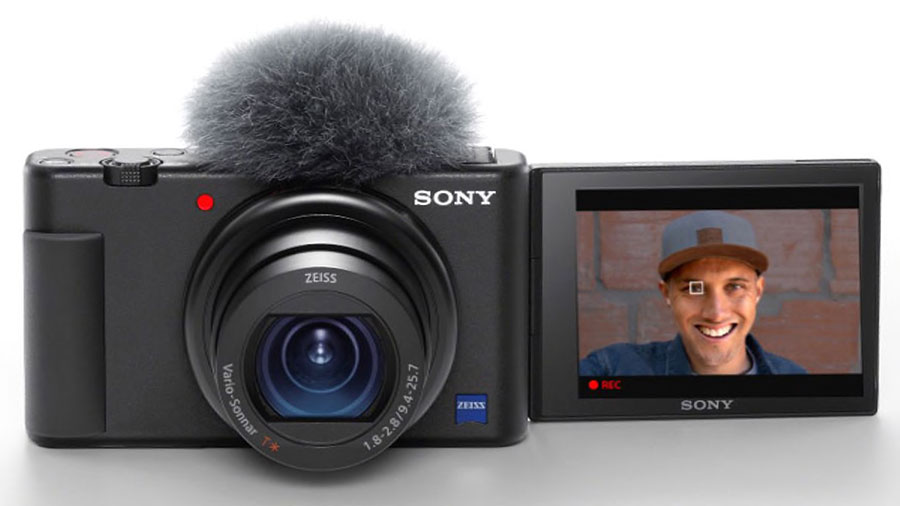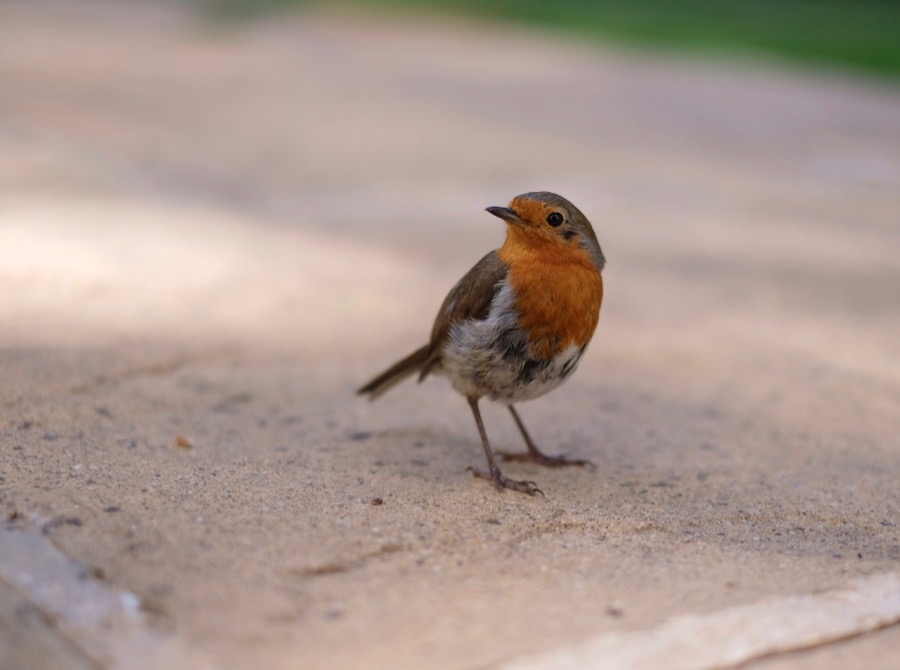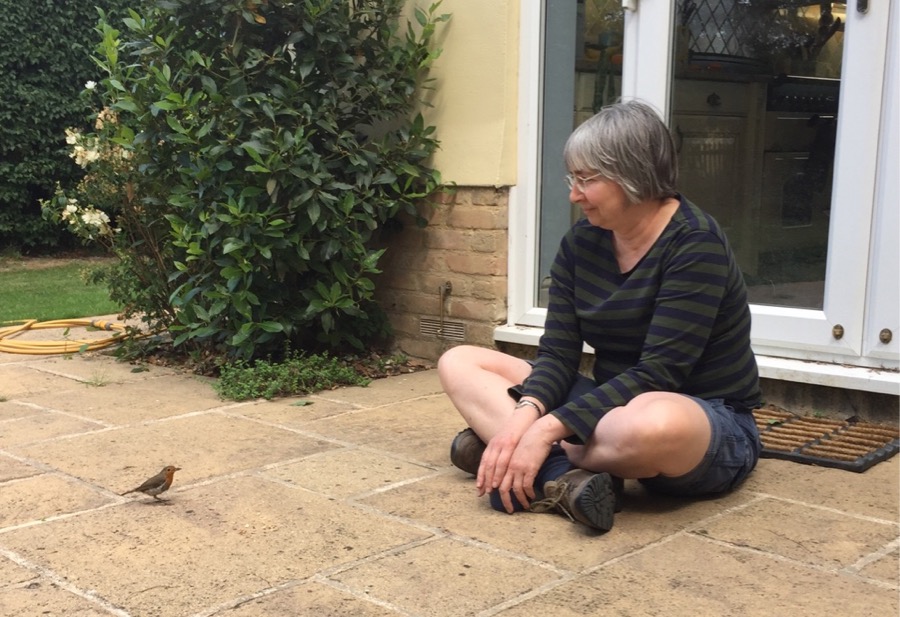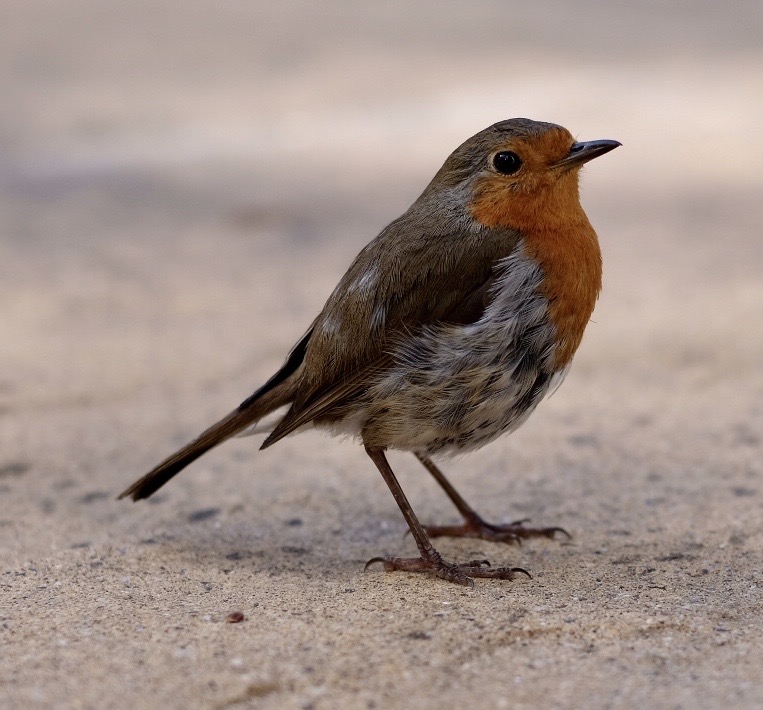Today we’re heading for Cornwall. Normally, that would be a major undertaking, but fortunately, we can see it from where we’re staying.
It’s just over there:
Looks nice, doesn’t it?
We’re staying in a throughly delightful B&B in Devon, on a working farm. This is the view from the front door:
Rose was greeted by the welcoming committee in the car park.
We drove down here in our little electric car. We’ve had it now for nearly five years, and have clocked up 30,000 miles, which I realise means we’ve put about eight megawatt-hours through its battery! That sounds like quite a lot, so I should point out that it represents total fuel costs to us of about £20 per month, and in our case that fuel was almost entirely from renewable sources; mostly hydroelectric, with a bit of solar and wind. So for the last five years, we’ve been driving around powered by sun, wind and rain.
One thing that helps with the efficiency is keeping your tyres pumped up to the correct pressure. I carefully did that a couple of days ago before setting off. But I couldn’t help noticing this morning that our very genial host, Rob, was doing the same, but he has a rather more powerful tyre pump than I have!
My friend Richard Morrison doesn’t write on his blog very often, so when he does two posts in one day, I realise that the holiday from which he’s just returned must have been a good one!
Still, one of them is this brilliantly simple observation about the total amount of relaxation one actually gets from a typical holiday:
Lovely.
The other is a recipe for a new cheese he’s invented: Le Condimentâle.
To produce authentic, Condimentâle cheese (appellation d’origine contrôlée) you need a nice warm vehicle and about two months…
I’ll let you read the rest for yourselves…
One of the big challenges facing lecturers in the University here is that, for at least the next term and probably the whole academic year, all of the lectures need to be recorded. Most of the small-group teaching, practical sessions, and so forth will be going ahead — with extensive Covid-prevention measures in place — but there’s no way we can pack big lecture halls full of people in the way we’ve become accustomed to over the last few centuries, so lectures will all be delivered online this year.
One aspect of my University job recently has been to find and evaluate some of the kit people might want to use for recording, either at home, or in the meeting rooms in the department that we’re equipping for this purpose. (At home, the sitting room has been converted into a recording studio for the 21 lectures Rose needs to get on disk!)
I’ve been making videos of some of my tests and experiments, mostly for internal use, but some of them might be helpful to others. If you should be considering purchasing a USB desk-standing microphone, for example, you might be interested in one of my recordings from yesterday:
I’ve been gathering some of these into a YouTube playlist as well:
Recording Equipment for Lockdown Lectures
I’ll add more there in due course, so do subscribe to my channel if it might be of interest.
I’ve been experimenting with a Sony ZV-1. This is a compact yet very capable camera, and if I wanted to purchase something explicitly for vlogging, this might well be it. Assuming I wanted to spend 700 quid in the process, of course.

Yesterday, I took it with me while walking the dog, and was really quite impressed. In the process, I produced a video which talks too much about a particular bit of Cambridgeshire for those who are interested in cameras, and too much about cameras for those primarily interested in walks in Cambridgeshire.
I fear the overlapping set in this Venn diagram may be rather small, but it was for my own interest more than anyone else’s; I’ll just put it here just in case there should turn out to be anyone else in that small and exclusive club of South Cambs Vlogging Dog Walkers…
(Most of the audio is recorded using an Instamic)
New toy! I bought an Instamic: a tiny voice recorder that I wanted to use in situations where conventional microphones might be difficult or a nuisance, especially when I’m recording with my GoPro Max, which has no facility to take an external mic input.
Here’s my quick first test on yesterday’s dog-walk, in case it’s of interest!
Today’s very quick tip for improving your video calls.
This one’s pretty obvious, of course. You won’t need to be told this. But perhaps you’ll have a friend who does?

Most of us are pretty familiar with standard Zoom calls by now, but if you’re asked to organise one with more than a couple of dozen participants, you may wish to make use of Zoom’s ‘Webinar mode‘, where you have a limited number of presenters (or ‘panelists’) and the majority of participants are just ‘attendees’. Attendees are able to watch, listen, and type questions, but are not normally visible or audible themselves, unless you promote them to be panelists too (which you can do on the fly).
Webinar mode is a paid add-on, but if you have a basic paid Zoom plan, you can add it on a monthly basis when you need it. It gives you some extra options like an Eventbrite-style registration system, polls, Q&A chat windows, post-call surveys, the ability to livestream to YouTube, etc. You can find out the details on Zoom’s site. Overall, while there are a few things I would like to change, it works really quite well.
But it is a bit different from a normal Zoom call, and having run a few of these now, ranging from tens to hundreds of attendees, I’ve come up with some tips and a checklist I run through beforehand, and I thought others might find them useful.
This may all look like a daunting amount of preparation, but it needn’t take too long, and going through it can remove a much more daunting amount of stress! If any of these steps does take a significant amount of time, then it’s certainly something you want to find out before, rather than during, your webinar!
There are lots of general video-conferencing basic tips you can find out there on the web, of course. Things like:
I won’t go into any more of these because I assume we all know them by now, but make sure your panelists do, too. In fact, if there’s just one tip you should take away, it’s this:
The trial session should include you, any speakers, and one or two other helpers. You want everyone to know what it’s like to be a panelist, and what it’s like to be an attendee. Things you’ll want to find out:
You need more than just two of you to try this kind of thing out.
You’ll also want to check all of the basic things listed in the previous section for each speaker, of course, and consider whether anything is likely to change. Are they in the same venue, on the same network, using the same machine, and will the lighting be different at the time of the actual webinar?
However, don’t hold your trial session just before the event! You may need to tell your keynote speaker that they’ll need to find a different location because they’re just a silhouette. Or they must borrow a different microphone. Or plug in an external keyboard. Or lock their children in the basement.
We were preparing for one lecture where the trial session was great. Our speaker normally worked from her conservatory/garden room, the lighting was good, and the acoustics were better than expected; everything was ready to go. And then, a couple of days beforehand, I looked at the weather forecast and realised that we were in for a major heatwave on that day! The conservatory was not going to be the right venue after all, and she had to do significant moving of furniture, lighting and equipment (followed, of course, by another trial session to check the new setup).
If your speakers are going to be sharing their screen, test that out in advance with every speaker. A couple of days ago, in a trial session, two of my panelists discovered that they hadn’t done Zoom screen-sharing on their Macs before. They needed to go into System Preferences and grant Zoom the appropriate permissions, then restart the app. You don’t want them to discover this just after you’ve introduced them to the audience.
One last point on trial sessions: when you set up a Zoom webinar, you’ll be asked if you want to enable a ‘Practice session’. This is also useful, but it is slightly different: Practice sessions allow panelists, and panelists only, to connect and check things out and chat just before the meeting starts. All the other attendees just get told that the meeting will begin soon, until you, the host, click the magic ‘Broadcast’ button, and the stage curtain rises.
So yes, you probably want to do a ‘practice session’ too, but think of it as ‘waiting in the wings’, rather than the dress rehearsal. It isn’t the right time for experimenting with what attendees can or can’t see or do, nor is it the time for discovering potential issues that may take longer to fix. That’s why I picked a different name for a ‘trial session’ above: don’t rely just on the practice session unless you and all the presenters have done this together on a regular basis. Set up a separate webinar for your trial, and make sure you use the same settings for the real event. Make sure, too, that your panelists are quite clear about which meeting link is which!
We’ve also learned:
Some of these involve Zoom settings that you can set up beforehand, others can be changed on the fly or during the meeting. In the case of the former, you may need to use the Zoom web interface to make the change; you can’t do everything through the app.
In advance, or at the start while people are taking their seats:
Tell the panel:
When the meeting starts, tell the attendees:
During the webinar:
You may want to ‘Spotlight’ a speaker’s video. Normally, Zoom will show the video stream of the current speaker. (Viewers can override this at their end by ‘pinning’ a certain view.) If your webinar is a panel session, you want this auto-switching. If it’s a single speaker, then you should also be fine, because everybody else will be muted, so it won’t switch anyway. However, ‘spotlighting’ the speaker’s video is a good safety measure to stop unexpected switches when somebody’s dog barks in the background after you forgot to mute them!
If, at the conclusion, you have questions or discussions involving other panelists, you probably want to switch off spotlighting at that point, so that the other speakers are visible again, and questions don’t come as disembodied voices from the ether.
And finally:
Right, there are many more things I could cover, but I hope that highlights a few things that you might want to consider, especially if you haven’t done this webinar thing before! Have fun, and I hope it goes well!
This project at UCLA is such an intriguing idea. And using today’s hardware and software, not too hard to implement.
Our friendly neighbour has been back…

He turns out to be particularly partial to small pieces of raisin.

If you ever want to invite a robin round to tea, I can guarantee that raisins will be a welcome accompaniment.

© Copyright Quentin Stafford-Fraser
Recent Comments